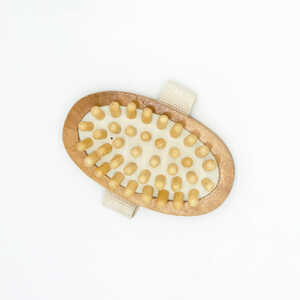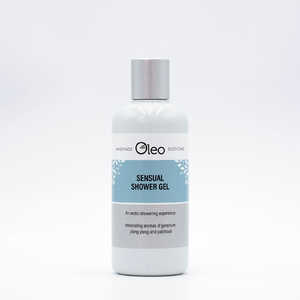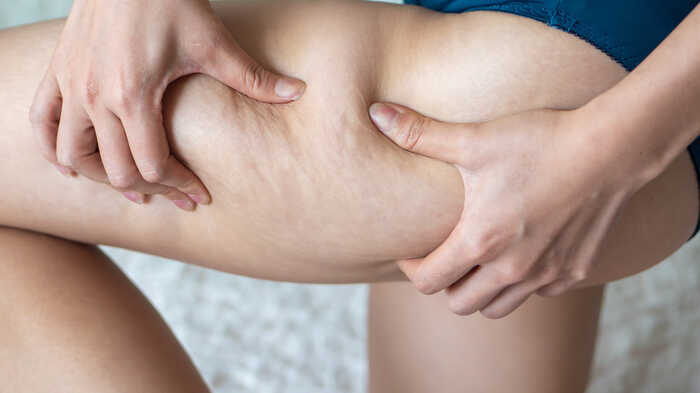
Understanding & Managing Cellulite: A Comprehensive Guide
Cellulite often complicates our relationship with our bodies, altering our self-image as we compare those lumps and bumps to flawlessly edited photos across social media and advertising. While we should embrace our skin, including cellulite, this isn't always easy when faced with the orange peel effect.
This explanation of cellulite will help you understand what it is and what you can (or can't) do about it.
What Is Cellulite?
Firstly, cellulite is natural and normal. It's related to the structure of collagen and elastin fibre bands and the fat cells that fall beneath them. In females, these bands of connective tissue appear as a wide-spaced grid, while in males, they form smaller crisscrosses. In females, as fat cells accumulate under the connective bands, they are less contained and push through, resulting in fat pockets appearing as lumps and bumps. It often appears on the thighs, stomach, and buttocks but can also occur on the upper arms. Despite society's obsession with flawless skin, it is estimated that 80-90% of adult women have visible cellulite.
What Causes Cellulite?
Several factors contribute to the development of cellulite. While everyone has fat cells and can develop cellulite, some are more prone to it than others. Factors include:

Gender
Cellulite affects women more than men due to higher levels of estrogen and anatomical differences. Higher estrogen levels are linked with fat storage in the thighs and hips. Men's connective tissue lies in a crisscross pattern, which holds fat cells down more effectively. Women's vertical bands of connective tissue are more likely to allow fat cells to bulge toward the skin surface, increasing the appearance of cellulite. Changes in estrogen levels during pregnancy and menopause can also worsen cellulite.

Age
Age is not a primary cause of cellulite, but it can play a role. Connective tissue weakens and becomes thinner with age, making it easier for fat to protrude through worsening cellulite's appearance.
Diet
A diet high in salt can increase fluid retention, potentially worsening cellulite. High-fat and high-preservative diets may bring about metabolic disorders that accelerate cellulite. Excessive carbohydrates can increase insulin levels and promote body fat, making cellulite worse.
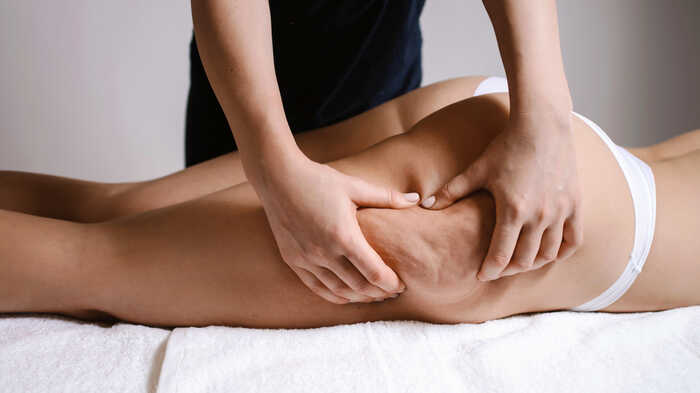
Genetics
Genetics significantly influence whether you'll develop cellulite. If your parent had cellulite, you are likely to inherit it. While efforts can be made to minimize its appearance, no action can avoid the hereditary factor. Accepting cellulite as a natural part of the body is essential.
Body Composition
A higher body fat percentage may increase the appearance of cellulite, as excess fat can be pushed through connective tissue. However, having cellulite does not mean having excess body fat. Since cellulite is related to connective tissue distribution, anyone can have cellulite, regardless of weight.
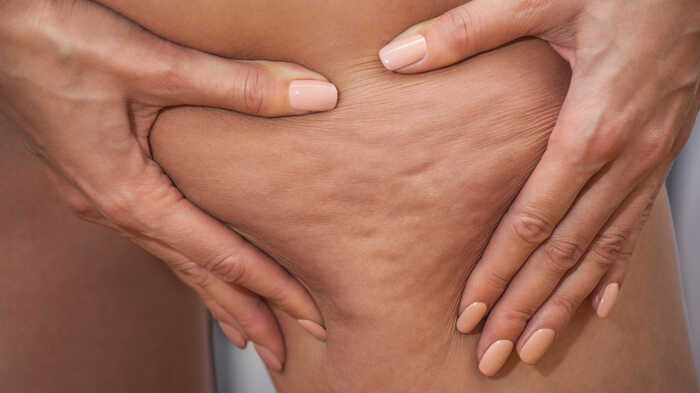
What Can Be Done About Cellulite?
Remember, you cannot get rid of cellulite, but some at-home remedies can help reduce its appearance.
- Increase water intake to improve hydration and flush out toxins. Hydrated skin is more supple and elastic.
- Eat healthy foods and consume more fibre. Empty carbs in white bread, sugary treats, and alcohol add calories, leading to fat, especially in cellulite-prone areas.
- Avoid smoking, as it affects the blood supply to the skin, making cellulite more visible.
- Exercise to build muscle and reduce fat, which can make skin look smoother and reduce the appearance of cellulite.
- Weight loss can reduce the look of cellulite, though yo-yo dieting can worsen it.
- Daily massage can improve blood flow and reduce excess fluid, making cellulite less noticeable. Use the Oleo Bodycare Anti-Cellulite Massager in a circular motion on dry skin or with Oleo vegan skincare products for better results.
Oleo Massage Balms, particularly the Grapefruit, Cypress & Juniper Massage Balm, are ideal for use with the Massager due to their detoxifying properties and aid in water retention. You can also use Oleo shower gels, hand-blended soaps, or bath soaks during your skincare routine. The Sleep Well, Stress Less, or Liniment Massage Oil can also provide a pleasurable massage experience.
Try to resist focusing on getting rid of something that you cannot remove and which is a natural part of your body. Instead, focus on sustainable lifestyle habits and using natural, vegan skincare products that will improve your health and well-being.
Products For Cellulite From This Blog
Posted by Olivia Chapman on June 18th 2024

